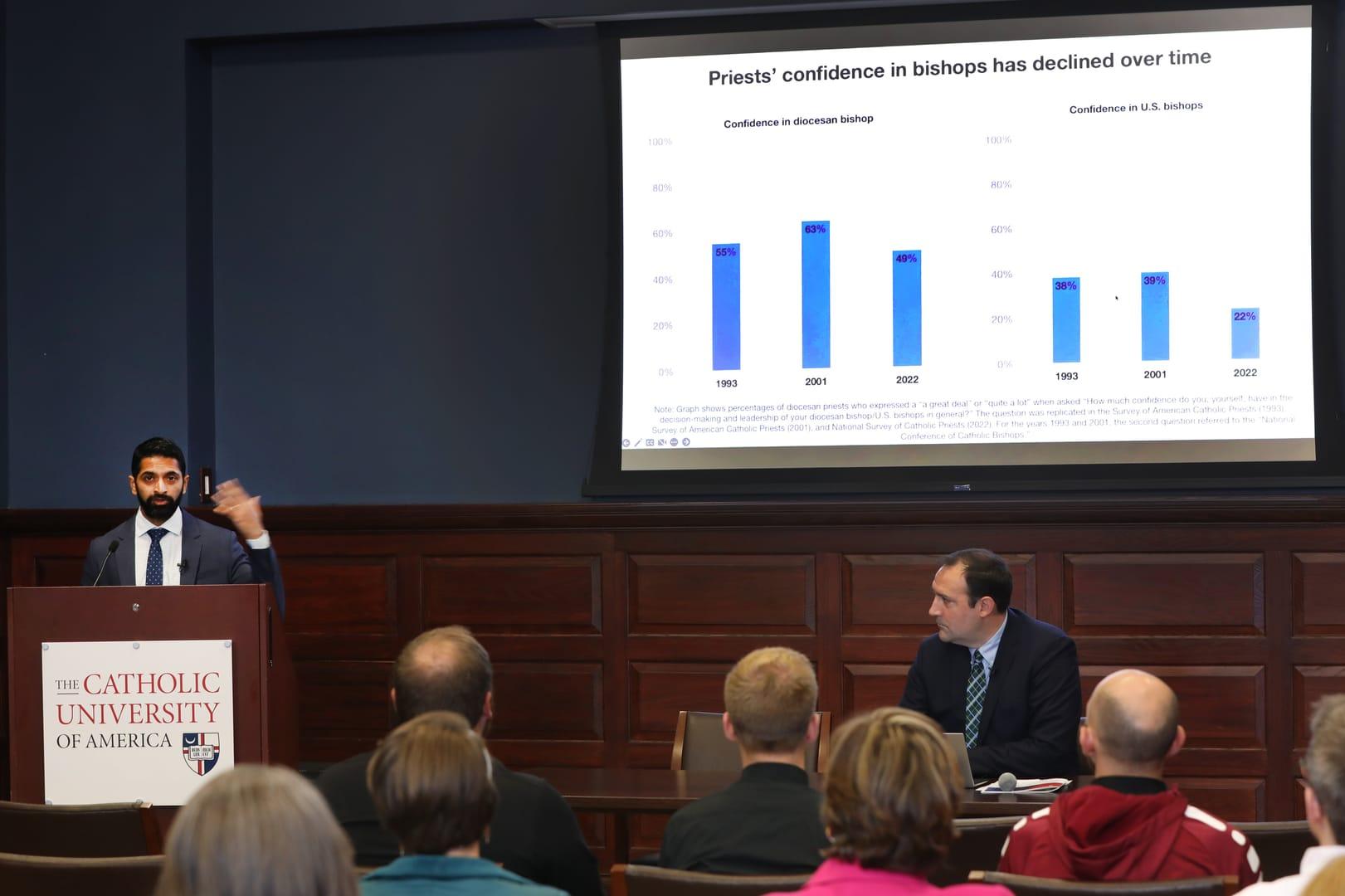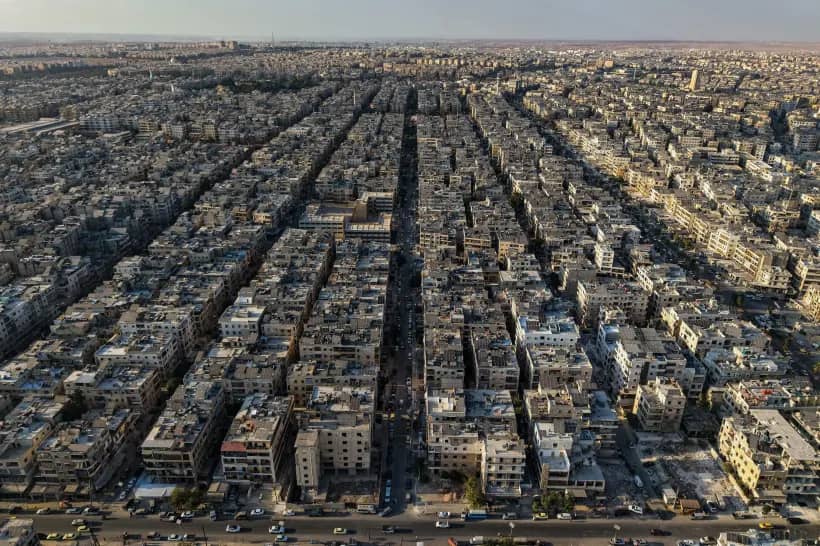NEW YORK – When asked to sum up the state of the American priesthood, Catholic University of America sociologist Brandon Vaidyanathan describes it as “fractured,” in that individually priests are doing well, but their assessment of the institutional Church “is not very good.”
What’s more, research conducted by Vaidyanathan and others has found that not only is there a striking deficit in the trust priests feel in their bishop, but there’s also a significant generational mistrust priests have in each other that relates to differing theological and political alignments.
“There’s a mutual distrust of each other that is driven by political differences, and so young priests view older priests with suspicion and vice versa,” Vaidyanathan told Crux. “The younger priests are more conservative, and don’t see the older priests as sort of a part of the same program.”
The insight became apparent to Vaidyanathan and other researchers in an analysis of data compiled for “The National Survey of Catholic Priests,” which was published in October 2022 by CUA’s Catholic Project. The survey, the largest of American Catholic priests in over 50 years, got responses from 3,516 priests across 191 dioceses/eparchies.
The survey also included interviews with more than 100 priests selected from respondents, and a census survey of U.S. bishops receiving 131 responses.
Among the findings were that priests’ morale is high and they have a strong view of their personal vocations, but a high percentage of priests expressed some level of distrust in their bishop, and young priests especially experience burnout.
After first survey findings were published last year, researchers conducted a deeper analysis of the data, which was published in November in a report titled “Polarization, Generational Dynamics, and the Ongoing Impact of the Abuse Crisis: Further Insights from the National Study of Catholic Priests.”
“Since [the initial survey was published] we have analyzed the qualitative data from about 104 interviews that we did, and our team was also looking at other kinds of interesting findings, patterns, that seemed to be present in the survey data that could help quantify and give us a sense of the distribution of some of the things we were finding,” Vaidyanathan, the chair of CUA’s Department of Sociology, explained.
“This issue of polarization, for instance, became very clear when our qualitative researchers were looking through the interviews and then we looked at the data and saw how it panned out,” he said.
Perhaps the most significant finding from that follow-up analysis was the conservative shift that’s taken place in the American presbyterate over the last fifty-plus years. No priests ordained in 2020 or later described themselves as “very progressive” theologically, with fewer than 5 percent describing themselves as “somewhat progressive” theologically. Fewer than 15 percent described themselves as “middle-of-the-road” theologically.
Conversely, more than half of priests ordained in 2020 or later described themselves as “conservative/orthodox” theologically, and about 25 percent described themselves as “very conservative/orthodox” theologically.
The number of priests who consider themselves either “conservative/orthodox” or “very conservative/orthodox” has increased with every ordination class since 1980.
In terms of political alignment, the analysis found that a little more than 50 percent of priests who were ordained in 2020 or later described themselves as either “conservative” or “very conservative” politically – about 40 percent and 10 percent, respectively. About 45 percent of respondents described themselves as “moderate” politically, with the remaining 5 percent consisting of priests who describe themselves as “somewhat liberal” or “very liberal” politically.
Compared to the ordination class of 1980, the percentage of priests who describe themselves as “conservative” or “very conservative” has increased, but not at a significant rate. In terms of political orientation, the real trend is that the percentage of priests describing themselves as “somewhat liberal” or “very liberal” has steadily gotten smaller and smaller.
Vaidyanathan said that if the current trends are extrapolated, then in 20 years “there won’t be any self-identified progressives, either theologically or politically.”
Related to the conservative shift, Vaidyanathan said what stood out most was the correlation between that and the mistrust that priests feel, both towards each other and towards their bishop. He said the clear divide that exists between recently ordained priests and those ordained many years was striking in the interviews. He said they “would sort of view each other with some degree of suspicion, if not derision.”
“The view among young, or recently ordained, priests was that the older folks are kind of jaded and cynical, and the older priests feel that ‘these guys are just waiting for us to die,’” Vaidyanathan said. “There’s a mutual sense of, ‘I don’t feel respected by these people.’”
Vaidyanathan said the priests didn’t provide reasons for their view of other priests in their interviews. However, he noted differences of opinion in restrictions on the Latin Mass were brought up – more recently ordained priests being frustrated with the restrictions, and older priests not really caring.
The new analysis found that the mistrust priests have towards their bishops also has to do with political and theological alignment. As Vaidyanathan explained, a priest is more likely to trust his bishop if they share the same views.
Vaidyanathan said answers to questions about how priests are doing on a personal level suggest that, in that sense, they are “thriving.” Meanwhile, they balk when asked about the diocese.
“If you ask them about their diocese, about their bishop, they say, ‘Don’t talk to me.’ They don’t want to go there. That’s miserable. So institutionally they’re kind of cynical,” Vaidyanathan said. “At the same time, they’re very hopeful and very committed when it comes to personal vocation.”
Follow John Lavenburg on X: @johnlavenburg
















